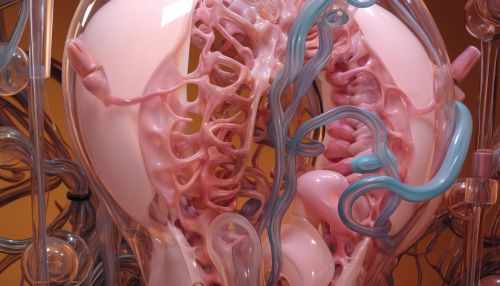Imaging Biomarker
Introduction
An Imaging Biomarker is a biological characteristic that can be objectively measured and evaluated as an indicator of normal biological processes, pathogenic processes, or responses to a therapeutic intervention. These biomarkers are derived from images and are used in clinical trials to measure the progress of a disease or the effectiveness of a treatment.
Types of Imaging Biomarkers
There are several types of imaging biomarkers, each with its unique characteristics and applications.
Anatomical Biomarkers
Anatomical Biomarkers are the most common type of imaging biomarker. They are used to measure changes in the size, shape, or structure of an organ or tissue. These changes can indicate the presence of a disease or the response to a treatment.


Functional Biomarkers
Functional Biomarkers measure physiological functions or metabolic processes within the body. They can provide information about the function of an organ or tissue, and how it changes in response to a disease or treatment.
Molecular Biomarkers
Molecular Biomarkers are used to measure the presence or concentration of specific molecules in the body. These biomarkers can provide information about the biochemical processes occurring within the body, and can be used to detect diseases at a molecular level.
Applications of Imaging Biomarkers
Imaging biomarkers have a wide range of applications in medical research and clinical practice.
Disease Detection
Imaging biomarkers are often used in the detection of diseases. They can provide valuable information about the presence and severity of a disease, and can help to identify patients who are at risk of developing a disease in the future.
Treatment Monitoring
Imaging biomarkers are also used to monitor the effectiveness of treatments. They can provide information about how a disease is responding to a treatment, and can help to identify patients who are not responding to a treatment.
Drug Development
In drug development, imaging biomarkers are used to assess the safety and efficacy of new drugs. They can provide information about how a drug is affecting the body, and can help to identify potential side effects of a drug.
Challenges and Future Directions
Despite the many benefits of imaging biomarkers, there are also several challenges that need to be addressed. These include the need for standardization of imaging protocols, the need for validation of new imaging biomarkers, and the need for integration of imaging biomarkers into clinical practice.
Looking to the future, it is expected that imaging biomarkers will play an increasingly important role in personalized medicine. By providing detailed information about the biological processes occurring within the body, imaging biomarkers can help to tailor treatments to the individual needs of each patient.
